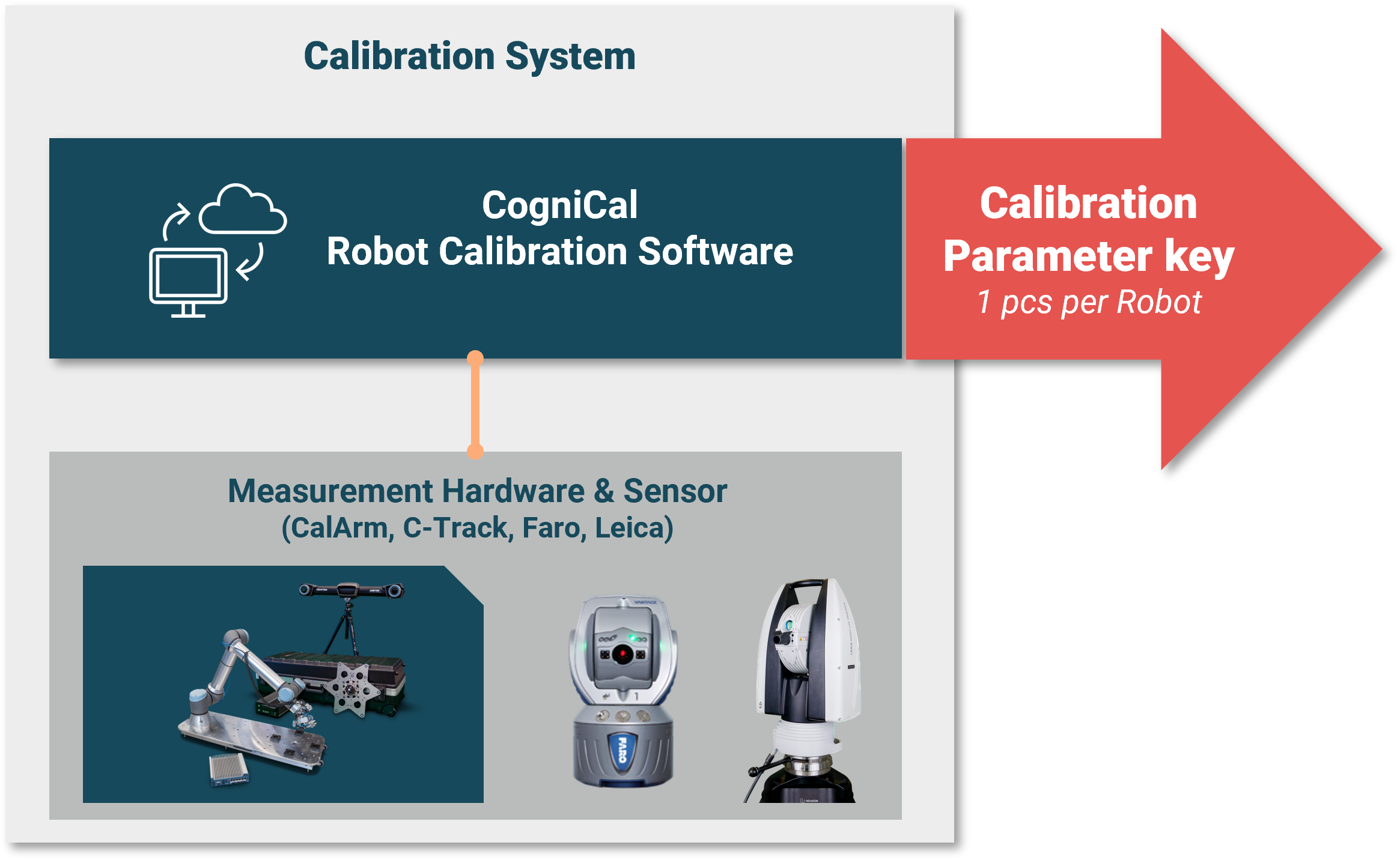Robot calibration is essential for achieving high accuracy. While accuracy is mostly requested for robot applications with fine tolerances, also processes involving e.g.:
Small batch sizes
Short product cycles
Offline-generated programs
Path segments with different robot configurations
would benefit from using accurate robots by significantly reducing the need for costly manual adjustments during program deployment. This leads to enhanced efficiency and cost-effectiveness.
Articulated serial kinematic robots, as we know most industrial robots, implies a mechanical structure where small imperfections originating from mechanical tolerances throughout the structure multiplies. Most robot control system uses an ideal geometrical representation (nominal kinematics) to translate between joint angles and flange poses (position and orientation). This is beneficial due to parameter consistency within robot type but overlooks the mentioned imperfections.
Since the imperfections are roughly constant for a certain robot individual, the robot motions show good repeatability. Disregarding the imperfections results in lack of accuracy. Consequently, while each robot may reliably return to a specific position, this position will differ from the intended one, and will not be consistent across different robots.

By calibrating the robots, the parameters representing the actual imperfections in each specific robot individual are identified. Using a correctly parametrized kinematic model, the imperfections are accounted for in the robot or process control, leading to highly improved robot accuracy.
The following components are needed along with the robot to perform a calibration:
A tracking system, e.g. laser tracker or dual camera system
A mathematical description of the robot geometry (robot model)
Calibration Software
During calibration, actual position data from a large set of robot configurations are captured using a tracking system. The calibration software then optimizes the parameters of the robot model such that the estimated TCP positions matches the reference data .
The quality of the result depends on the reference data accuracy, the robot configuration coverage, how well the mathematical model represents the actual robot, and the method used for parameter optimization.

Cognibotics' robot calibration software CogniCal is designed to provide high-quality robot calibration in a user-friendly manner, also for non-expert users. It serves as a flexible tool for premium parameter identification and offers valuable support throughout the entire calibration process. Some features:
Uses a tracking system of your choice, most commonly used third-party systems are supported.
Generates optimal data capturing robot motions for good coverage in short time.
Uses superior robot models including more than just the robot kinematics.
Cognibotics' identification routines that automatically calculates the unique parameters for your setup.
Intuitive user interface that guides the process and makes it easy to manage both log data and robot models.
Enabling accurate robots for your processes by obtaining high-quality, user-independent parameters for your robot setup, has never been easier.
Unlock your production potential today with faster robot commissioning, increased production yield, quick adaptations to new products, and by utilizing robots as multi-process machines.